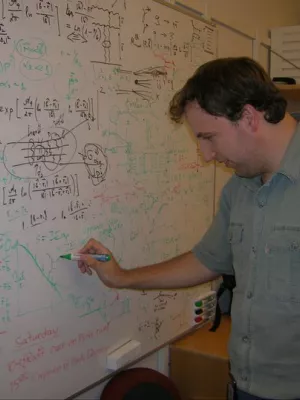
Roman Pasechnik
Senior lecturer

D-wave effects in diffractive electroproduction of heavy quarkonia from the photon-like V→ QQ¯ transition
Author
Summary, in English
We analyse the validity of a commonly used identification between structures of the virtual photon γ∗→ QQ¯ and vector meson V→ QQ¯ transitions. In the existing studies of S-wave vector-meson photoproduction in the literature, such an identification is typically performed in the light-front (LF) frame while the radial component of the meson wave function is rather postulated than computed from the first principles. The massive photon-like V→ QQ¯ vertex, besides the S-wave component, also contains an extra D-wave admixture in the QQ¯ rest frame. However, the relative weight of these contributions cannot be justified by any reasonable nonrelativistic QQ¯ potential model. In this work, we investigate the relative role of the D-wave contribution starting from the photon-like quarkonium V→ QQ¯ transition in both frames: in the QQ¯ rest frame (with subsequent Melosh spin transform to the LF frame) and in the LF frame (without Melosh transform). In both cases, we employ the same radial wave functions found in the potential approach. We show that the photon-like transition imposed in the QQ¯ rest frame, with subsequent boosting to the LF frame, leads to significant discrepancies with the experimental data. In the second case, i.e. imposing the photon-like transition straight in the LF frame, we find that the corresponding total J/ ψ(1 S) photoproduction cross sections are very close to those obtained with the “S-wave only” V→ QQ¯ transition, both leading to a good description of the data. However, we find that the “S-wave only” transition leads to a better description of photoproduction data for excited (e.g. ψ′(2 S)) heavy quarkonium states, which represent a more effective tool for study of D-wave effects. Consequently, the predictions for production of excited states based on the photon-like structure of V→ QQ¯ transition should be treated with a great care due to a much stronger sensitivity of the D-wave contribution to the nodal structure of quarkonium wave functions.
Department/s
- Theoretical Particle Physics - Has been reorganised
Publishing year
2020
Language
English
Publication/Series
European Physical Journal C
Volume
80
Issue
2
Document type
Journal article
Publisher
Springer
Topic
- Physical Sciences
Status
Published
ISBN/ISSN/Other
- ISSN: 1434-6044

